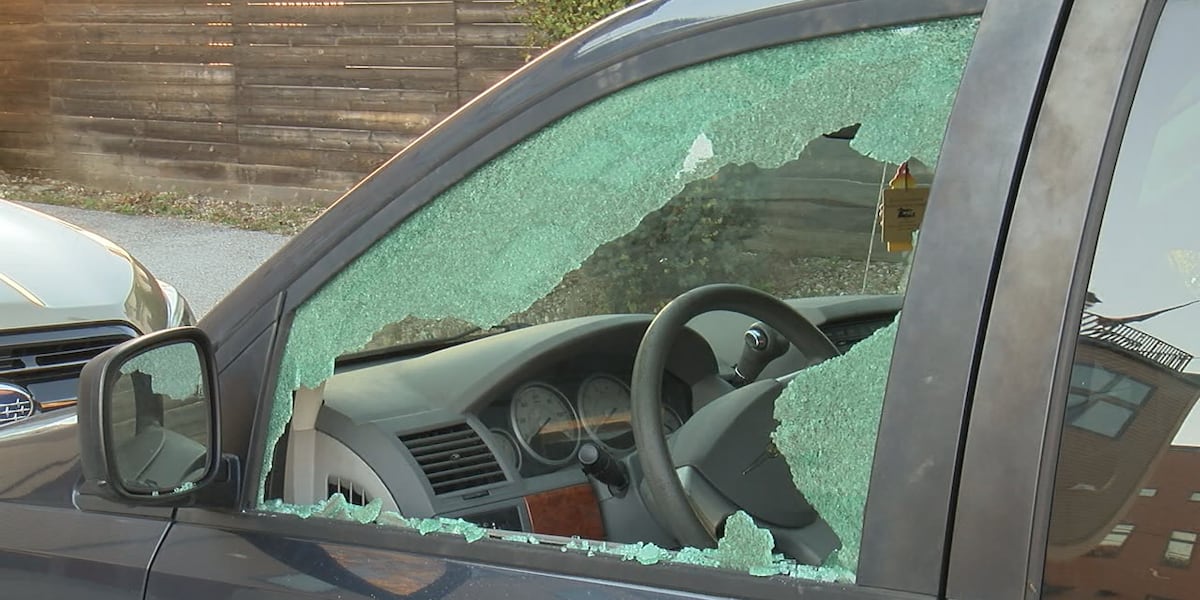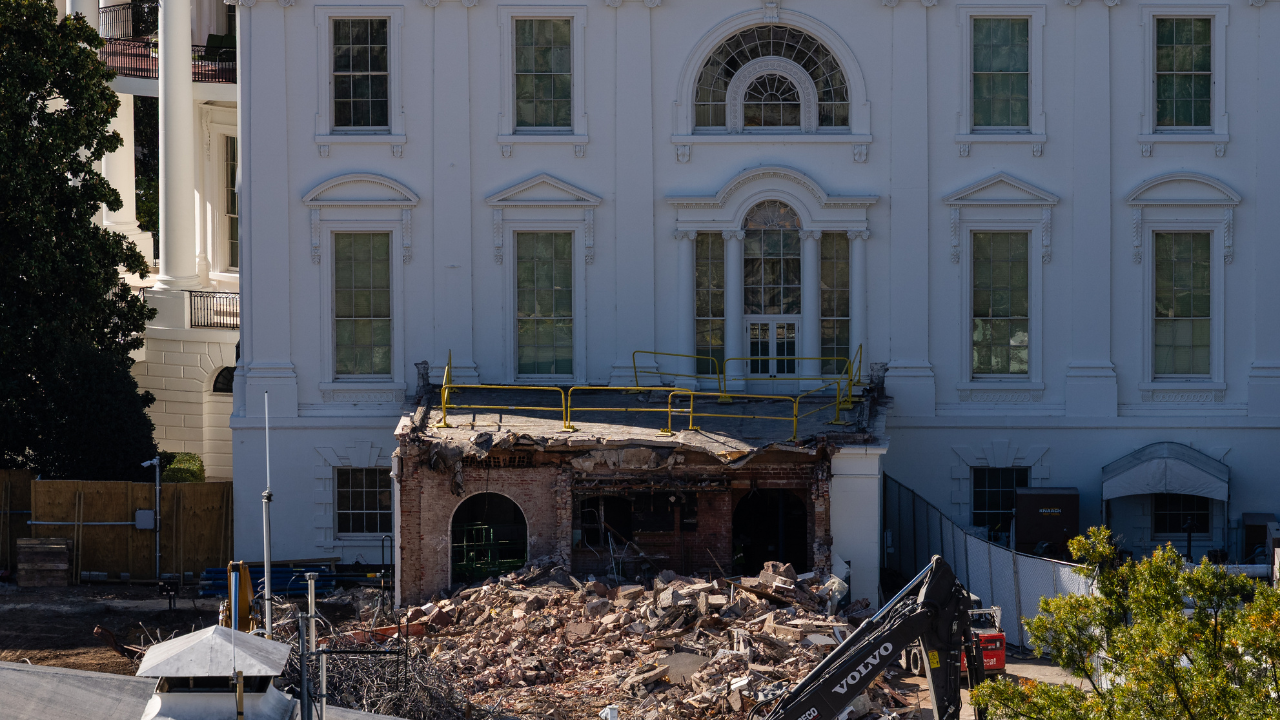[1/7]View of a damaged property after the arrival of Hurricane Idalia in Horseshoe Beach, Florida, U.S., August 31, 2023. REUTERS/Julio Cesar Chavez Acquire Licensing Rights
News
Florida’s storm-struck Gulf Coast takes stock as Idalia soaks Carolinas
/cloudfront-us-east-2.images.arcpublishing.com/reuters/3YSJVHVLZNKRBECGCYFLVYMFDQ.jpg)
HORSESHOE BEACH, Florida, Aug 31 (Reuters) – Tropical Storm Idalia drenched the Carolinas with heavy rain before departing the U.S. Eastern Seaboard on Thursday, while officials in Florida, where the tempest made landfall as a major hurricane a day earlier, stepped up recovery and damage-appraisal efforts.
Nearly 36 hours after plowing ashore from the Gulf of Mexico at Keaton Beach in Florida’s Big Bend region, packing Category 3 winds of nearly 125 miles per hour (201 kph), Idalia weakened from a tropical storm to a post-tropical cyclone and drifted out into the Atlantic.
At the height of its fury on Wednesday, Idalia ravaged a wide swath of low-lying and largely rural Gulf Coast landscape and forced emergency teams, some in boats, to rescue dozens of residents who became trapped by floodwaters.
The storm brought fierce winds and drove surging seawater miles inland, strewing the area with fallen trees, power lines and debris. Many buildings were in shambles, and power outages were widespread.
The storm ranked as the most powerful hurricane in more than a century to strike the Big Bend region, a sparsely populated area laced with marshland, rivers and springs where the state’s northern Gulf Coast panhandle curves into the western side of the Florida Peninsula.
The damage and loss of life were less than many had feared, with authorities confirming three traffic-related fatalities linked to the storm in Florida and another in southeastern Georgia.
Idalia’s storm surge – considered the greatest hazard posed by major hurricanes – appeared to have caused no deaths.
Even as Idalia headed out to the Atlantic, the back end of the storm system was producing downpours that were forecast to dump as much as 10 inches (25 cm) of rain in some spots along the coastline of North and South Carolina, the National Weather Service said.
Forecasters had warned of possible life-threatening flash floods in the Carolinas. But local media reports at day’s end said both states had mostly been spared.
Flooding damaged about 40 businesses in the town of Whiteville, North Carolina, marking that state’s most serious brush with Idalia, according to Raleigh-based ABC News affiliate WTVD-TV.
South Carolina’s emergency management center was winding down its operations by afternoon, said Charleston-based station WCSC-TV.
“We were very fortunate this time,” state emergency management chief Kim Stenos was quoted as saying.
‘THE HOUSE IS STILL THERE’
Much of Florida’s Big Bend coast was much less fortunate.
Horseshoe Beach, a community about 30 miles south of landfall, was among those that bore the brunt of Idalia’s impact. Video footage showed scattered remnants of trailer homes sheared from bare concrete foundations. Other trailer homes had toppled and slid into lagoons, and boat docks were reduced to piles of splintered lumber.
John “Sparky” Abrade, a 77-year-old retiree who lives in the community, said he nevertheless felt relieved when he saw the damage to his home, even though the windows were blown out and household items scattered about.
“I’m feeling great. The house is still here,” he said.
Local, state and federal authorities said they would assess the full extent of damage in the days ahead. Insured property losses in Florida were projected to run to $9.36 billion, according to investment bank UBS.
“We’ve seen a lot of heart-breaking damage,” Governor Ron DeSantis said during an afternoon news briefing after touring three communities near where the storm made landfall.
President Joe Biden approved a major disaster declaration for several hard-hit Florida counties, Federal Emergency Management Agency (FEMA) Director Deane Creswell said after touring the area with Decanis. Biden said he plans to visit some of the storm-battered areas on Saturday.
Despite heavy damage to homes in many coastal communities, Idalia proved far less destructive, or lethal, than Hurricane Ian, a Category 5 storm that struck Florida last September, killing 150 people and causing $112 billion in property losses.
The last hurricane documented making landfall on the Big Bend coast with maximum sustained winds of 125 mph was an unnamed storm that struck Cedar Keys in September 1896, devastating the area.
Decanis credited the accuracy of Idalia forecasts tracking its path with helping authorities fine-tune evacuation plans and thus save lives.
“People, particularly in this area – who were in the way of a potential significant storm surge – they did take the proper precautions,” he said.
Across the Southeast, electricity outages from fallen trees, utility poles and power lines were widespread. In all, more than 175,000 homes and businesses were without power in Florida, Georgia and the Carolinas on Thursday, according to Poweroutage.us.
Florida officials said crews would restore most of the state’s electricity within 48 hours.
For some, losses from the storm cut deep.
In Horseshoe Beach, Austin “Buddy” Daniel Ellison, 39, and his father Ronald Daniel Ellison, plodded through the ruins of Ed’s Baitshop, the family’s business. Nearby, their home was badly damaged.
“I ain’t never seen one like this, my Dad never seen one like this,” Buddy Ellison said.
The family was grateful that timely evacuation meant no one was hurt. But the Ellisons said they lacked insurance and will have to leave the area where their family has deep roots.
“This storm is forcing us out of here,” Ronald Ellison said. “As I see it now, it’s over.”
Reporting by Maria Alejandra Cardona in Steinhatchee, Florida, and Marco Bello in Cedar Key, Florida; Additional reporting by Rich McKay and Brendan O’Brien; Writing by Brendan O’Brien and Steve Gorman; Editing by Marguerita Choy, Cynthia Osterman and Miral Fahmy
Our Standards: The Thomson Reuters Trust Principles.

News
1 dead, 6 injured in shooting at Lincoln University homecoming festivities

Authorities discuss shooting at Lincoln University that left one dead
One person was killed and six others injured in a shooting at Lincoln University during homecoming events. Police continue to seek information.
One person was killed and six were injured in a late-night shooting Oct. 25 at Lincoln University in Chester County, Pennsylvania.
The gunfire erupted just before 9:30 p.m. Saturday in the parking lot of the university’s International Cultural Center, where students and alumni had gathered for homecoming festivities.
Investigators have not yet determined if there was more than one shooter. One armed person was taken into custody, but investigators are not saying if that person is a suspect.
“It was a chaotic scene and people were running everywhere,” said Chester County District Attorney Chris de Barrena-Sarobe during a 1:00 a.m. press conference. He confirmed the fatality and multiple injuries but said details remain scarce.
Investigators said they have identified the victims, but have not yet released information about them, including whether any of them were students.
The FBI, Pennsylvania State Police and Lincoln University Police Department are involved in the investigation. Authorities say more information will be released as the investigation continues Oct. 26.
A motive for the shooting is not known at this time, investigators said.
“We’re operating as if this is not an incident where someone came in with the design to inflict mass damage on a college campus,” de Barrena-Sarobe said. “We’re collecting ballistic evidence and going through that evidence now.”
The shootings occurred during what Lincoln Police Chief Marc Partee described as a tailgate celebration “where we gather, we meet friends that we’ve seen, haven’t seen for years, reconnect, share stories, things of that nature.”
The HBCU university’s homecoming game against Elizabeth City State University was played earlier that afternoon.
“This was to be a joyous occasion − homecoming, when individuals come back and they give back to their alma mater, and they relive the good memories of their times at Lincoln University,” Partee said. “This was interrupted by gunfire that should not have occurred, and we are concerned for our students who had to experience this, our alumni who had to experience this, and our visitors.”
Outside the campus gates the following morning, the only visible sign of the tragedy was ribbons of caution tape fluttering in the breeze.
Access to the campus is restricted. Every vehicle is being stopped, and only students and their parents are being allowed entry.
Students who have ventured out beyond the school grounds say the atmosphere on campus is tense and subdued.
Sani Freeman, 20, who was visiting friends and her sister, a student at Lincoln, described the campus as eerily quiet. She and senior Jiles Ebai had just left the parking lot minutes before the gunfire erupted.
“We heard it, but we didn’t know what was going on,” Ebai said. “Then we saw people running.”

Lincoln University senior Jiles Ebai talks about fatal campus shooting
Lincoln University senior Jiles Ebai talks about campus shooting that left 1 dead, 6 hurt
Ebai said he doesn’t believe the shooter was a student at the school. “Why would we mess our homecoming up?” Raheem Henderson, a sophomore who did not attend the homecoming events, was dropped off at the entrance and expressed concern about campus safety.
“I think it’s sad,” Henderson said. He added that he believes future homecomings should be canceled or have better security.
Lincoln University is located along Baltimore Pike in Lower Oxford Township, Pennsylvania. It was one of the nation’s first historically Black colleges and universities. It enrolls nearly 2,000 students.
Investigators are urging anyone with information, photos, or videos from the scene to contact the FBI tip line at 1-800-CALL-FBI.
This story will be updated.
To share your community news and activities with our audience, join Delaware Voices Uplifted on Facebook. Nonprofits, community groups and service providers are welcome to submit their information to be added to our Community Resources Map. Contact staff reporter Anitra Johnson at ajohnson@delawareonline.com.
News
Video: How Trump Is Getting Some Workers Paid Despite the Shutdown

new video loaded: How Trump Is Getting Some Workers Paid Despite the Shutdown

By Tony Romm, Alexandra Ostasiewicz, June Kim and Pierre Kattar
October 25, 2025
News
It’s been a rollercoaster few years for Six Flags. Can Travis Kelce help?

Kansas City Chiefs tight end Travis Kelce says he grew up going to Six Flags parks and wants to help make them special for the next generation of families.
Reed Hoffmann/AP
hide caption
toggle caption
Reed Hoffmann/AP
Travis Kelce, the Kansas City Chiefs tight end and fiance of Taylor Swift, sparked jokes and hopes this week when he announced his investment in the embattled amusement park company Six Flags Entertainment.
The football star, alongside two corporate executives, teamed up with JANA Partners to purchase a combined stake of about 9% of Six Flags’ shares, making them one of its largest shareholders, according to Tuesday’s news release.

JANA Partners is an activist investment firm, meaning it buys a substantial stake in a company’s equity in order to push for changes — both operational and managerial — it believes will benefit that company.
“Couldn’t pass up the opportunity to continue the tradition and make Cedar Point and Six Flags even more special for the next generation of families!” Kelce wrote on Instagram. “So crazy to even imagine this is real, but you gotta love it when life comes full circle.”
Kelce also shared home video clips of himself as a child enjoying the rides at Cedar Point, the 364-acre amusement park in Sandusky, Ohio, that he and his brother (and retired pro footballer) Jason grew up going to every year, as the two enthusiastically reminisced in an episode of their New Heights podcast. Kelce, who grew up in a suburb of Cleveland, calls himself a “lifelong Six Flags fan.”
Cedar Point’s former operator, Cedar Fair, merged with Six Flags in 2024 to become the largest amusement park operator in North America, touting 42 parks across the U.S., Canada and Mexico.

At the time, many amusement parks — and Six Flags especially — were struggling to increase attendance in the wake of the COVID-19 pandemic. Park analysts and enthusiasts hoped the merger would lower ticket costs, raise revenue and make it more competitive against industry heavyweights like Disney and Universal.
But that hasn’t been the case, says Dennis Speigel, CEO of the consulting firm International Theme Park Services.
“As this merger occurred, I think the due diligence was probably done a little too quickly and it had a lot of flaws in it,” he told NPR. “And then it was also impacted by what I call the external factors: weather, economy, uncertainty of what’s happening in geopolitical areas.”
Six Flags now has $5.3 billion in debt. Its CEO, Richard Zimmerman, is set to step down by the end of the year, after it reported a net loss of $100 million for the second quarter of 2025 and combined attendance down 9% year-over-year. It is shuttering one of its parks — Six Flags America in Bowie, Md. — in early November and is expected to close another in Santa Clara, Calif., in 2027.

Speigel is hopeful the new shareholders will get Six Flags back on track. And while he was initially surprised to learn of Kelce’s involvement, he says it makes sense because “he’s at the zenith of his career in football … and in love.”
“Having a name like that be associated with Six Flags at this point in time, when they’ve gone through quite a few years recently of negativity, speaks well to their future and what they’re looking to do,” he says. “Obviously, he’s a younger person. He speaks to the teens, the young adults and the young adults with families. And that’s the Six Flags audience.”
Kelce’s fame — and high-profile love story — have boosted businesses before. Swift is credited with increasing female NFL viewership and ticket sales as their relationship unfolded. And, in recent days, his social media announcement has been flooded with fans’ pleas for a Swift-themed park, or at least a rollercoaster.
Six Flags’ rocky ride
Six Flags opened with the “Six Flags Over Texas” park in 1961, and for years was one of America’s most iconic theme park companies (along with Disney). But for the last decade, Speigel says, it has been “a ship at sea without a captain.”
“I would have to say [out of] the top five or six operators during the last couple of years, Six Flags has suffered the most,” he says.
Six Flags has had four CEOs since 2015.

It shifted its pricing strategy in 2022 to target a more affluent demographic, confusing and alienating core customers in the process. And in recent years, a number of high-profile ride malfunctions have stranded and even injured visitors. This year, extreme temperatures and economic uncertainty drove attendance down even further.
“To see Six Flags have fallen off the precipice and down to where it is now, it’s sad,” Speigel says. “And everybody in the industry, competitors and alike, are all rooting for their return and their comeback.”

Visitors arrived to a “Welcome Back” sign at Six Flags Magic Mountain in Valencia, Calif., when it reopened after the COVID-19 pandemic in April 2021.
Jae C. Hong/AP
hide caption
toggle caption
Jae C. Hong/AP
What might change?
JANA Partners said in its announcement that it plans to engage with Six Flags’ management and board of directors “regarding opportunities to enhance shareholder value and improve the guest experience.”
NPR has reached out to Jana Partners for more information about its goals but did not hear back by publication time.
The Wall Street Journal reports that the investment firm wants to “modernize technology, refresh leadership and evaluate a potential sale as ways to boost the company’s share price.”
In a statement shared with NPR, a Six Flags spokesperson said it appreciates the perspectives of shareholders and takes their feedback seriously.
Speigel says Six Flags’ debt could force the new investors to take “some drastic measures,” like selling some of its parks, either to commercial real estate or even private equity groups. And he stresses that foot traffic is key in the industry.

“We live on repeat visitation, and repeat visitation is driven by capital improvements, new rides and attractions, dark rides, the new technologies,” he says. “So we have to hopefully see the growth from that.”
Speigel says even though U.S. amusement parks may not be experiencing the same rate of growth that they did several decades ago, they still attract some 400 million visitors each year — most of whom don’t care who owns a park as long as their experience is clean, fun and safe.
He hopes JANA recognizes Six Flags, and the industry in general, as “the last real bastion of family fun in the United States, in fact globally, where a family can go as a total unit. And I hope they put their capital behind that and lift it out of the ashes where it is now.”
-

 New York3 days ago
New York3 days agoVideo: How Mamdani Has Evolved in the Mayoral Race
-

 World6 days ago
World6 days agoIsrael continues deadly Gaza truce breaches as US seeks to strengthen deal
-

 News5 days ago
News5 days agoVideo: Federal Agents Detain Man During New York City Raid
-

 News5 days ago
News5 days agoBooks about race and gender to be returned to school libraries on some military bases
-

 Technology6 days ago
Technology6 days agoAI girlfriend apps leak millions of private chats
-

 Politics6 days ago
Politics6 days agoTrump admin on pace to shatter deportation record by end of first year: ‘Just the beginning’
-

 News6 days ago
News6 days agoTrump news at a glance: president can send national guard to Portland, for now
-

 Business6 days ago
Business6 days agoUnionized baristas want Olympics to drop Starbucks as its ‘official coffee partner’
















